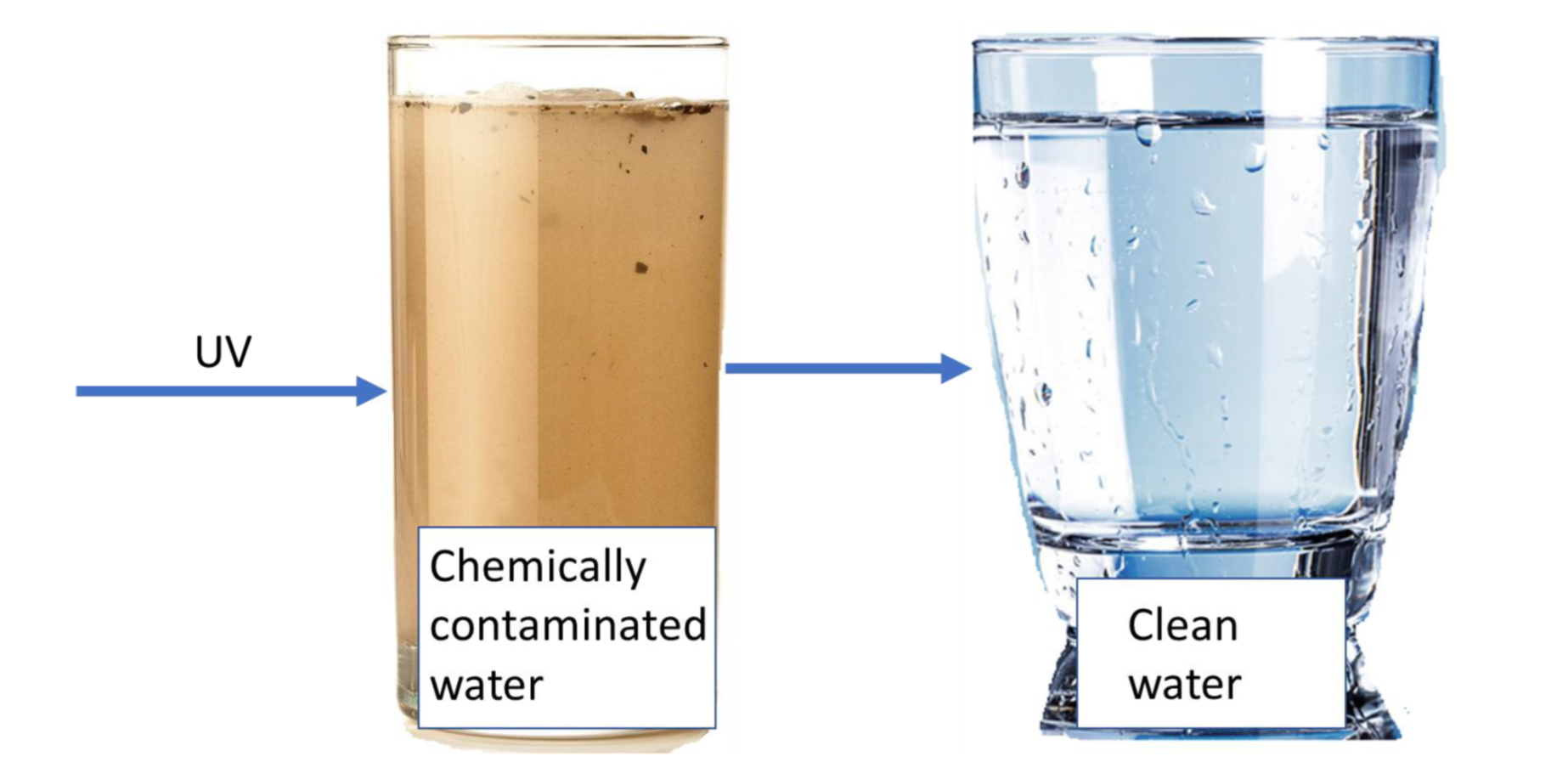The goal in most water purification technologies is to completely remove contaminants from the feed water. That is, it is preferable not to just collect and concentrate the contaminants into a waste stream. In the case of organic contaminants, this can be accomplished by breaking these types of compounds down into carbon dioxide and other innocuous substances. Such reactions can be sped up by adding catalytic compounds such as titanium dioxide that facilitate oxidation of the organic pollutants. However, these reactions are still currently too slow to be commercially viable in general, and therefore their widespread industrial use is hindered by limited efficiency. Existing water purification technologies are often limited in their range of treatable contaminants, especially with regard to organic molecules which include toxic man-made chemicals such as per- and polyfluoroalkyl substances (PFAS). Purification requires large equipment and are often energy-intensive and costly. What is needed are less energy intensive methods to speed up the decontamination reaction rate, thus the treatment process, of a wide range of polluted water sources.
LLNL researchers have developed a method for enhancing the photocatalytic degradation of organic contaminants in water through the incorporation of patterned plasmonic metal nanostructures with TiO2 photocatalysts. The multi-step process to incorporate UV plasmonic metal nanostructures with the photocatalyst can be briefly summarized below:
• Nanosphere lithography step on photocatalytic substrate.
• Etch negative space in deposited nanobead network.
• Electron-beam evaporation of plasmonic material
• Nanobead liftoff to leave behind patterned plasmonic nanostructures
This approach has the potential to:
• significantly improve the efficiency of the water purification processes,
• drive down the cost,
• enable the decontamination of many prevalent toxic pollutants (such as PFAS) that can be challenging to remove via other techniques.
Water purification, wastewater treatment
Current stage of technology development: TRL 2
LLNL has patent(s) on this invention.
U.S. Patent No. 11358880 Water Purification published 6/14/2022


